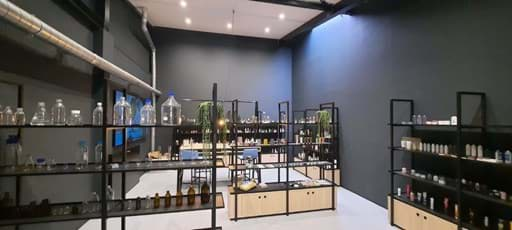
The increasing pollution by microplastics

Increasing microplastic pollution is an alarming threat that must be prevented
The unintended consequences of conventional plastics can't be fixed. Microplastics are permanent and impossible to clean once emmited. As plastic production is estimated to triple by 2050, microplastic pollution will accelerate accordingly. It is a threat to our ecosystem and health. We can't wait around.

Invisible danger all around us
Air pollution has been called a silent killer because its widespread effects are often not attributed to toxic air. Similarly, we don’t yet know all harmful effects of microplastics, but there are alarming studies already. For example, microplastics cause damage to human cells and according to scientist we should be concerned. Microplastics could be compared to asbestos or lead, materials that once were considered useful, until their dangerous side effects were discovered. We can’t afford to wait around to confirm all unintended consequences of conventional plastic. Scientists have already warned us.

Tsunami of plastic waste ahead of us if nothing changes
Over 300 million tons of plastic is produced every year, and that amount is expected to triple by 2050. Plastic can be convenient for things that need to last, but all too often, the plastic we use has a short lifecycle and it ends up in the wrong place. Furthermore, when disposed, littered, and even in use, plastic degrades into microplastics. Those tiny particles last forever, accumulate in the nature and cause a serious health threat to animals and humans. Currently, on average, we ingest 5 grams of microplastics a week, the equivalent of a credit card. Microplastics run through our veins and our lungs.They have even been discovered in the placentas of unborn babies.

Microplastics are everywhere
Microplastics have already contaminated our entire planet. Eventually they become so fine that wind can carry them. Consequently, microplastics have been found in freshly fallen Antarctic snow, sea ice and surface water. They have found their way in the high-altitudes of Mount Everest and Himalayas. They have even been discovered at deepest point of ocean. Like air pollution that also includes plastic particles, microplastics are almost impossible to clean once they are released in the environment. They just keep accumulating, causing a bigger and bigger threat to our ecosystem and health every day.
That’s why conventional plastics must be replaced with sustainable alternatives that biodegrade without leaving permanent microplastics behind as much as possible as quickly as possible. In fact, in August 2022, the World Health Organization stated that we need to reduce the use of plastics and move towards a more “sustainable plastics economy”.






